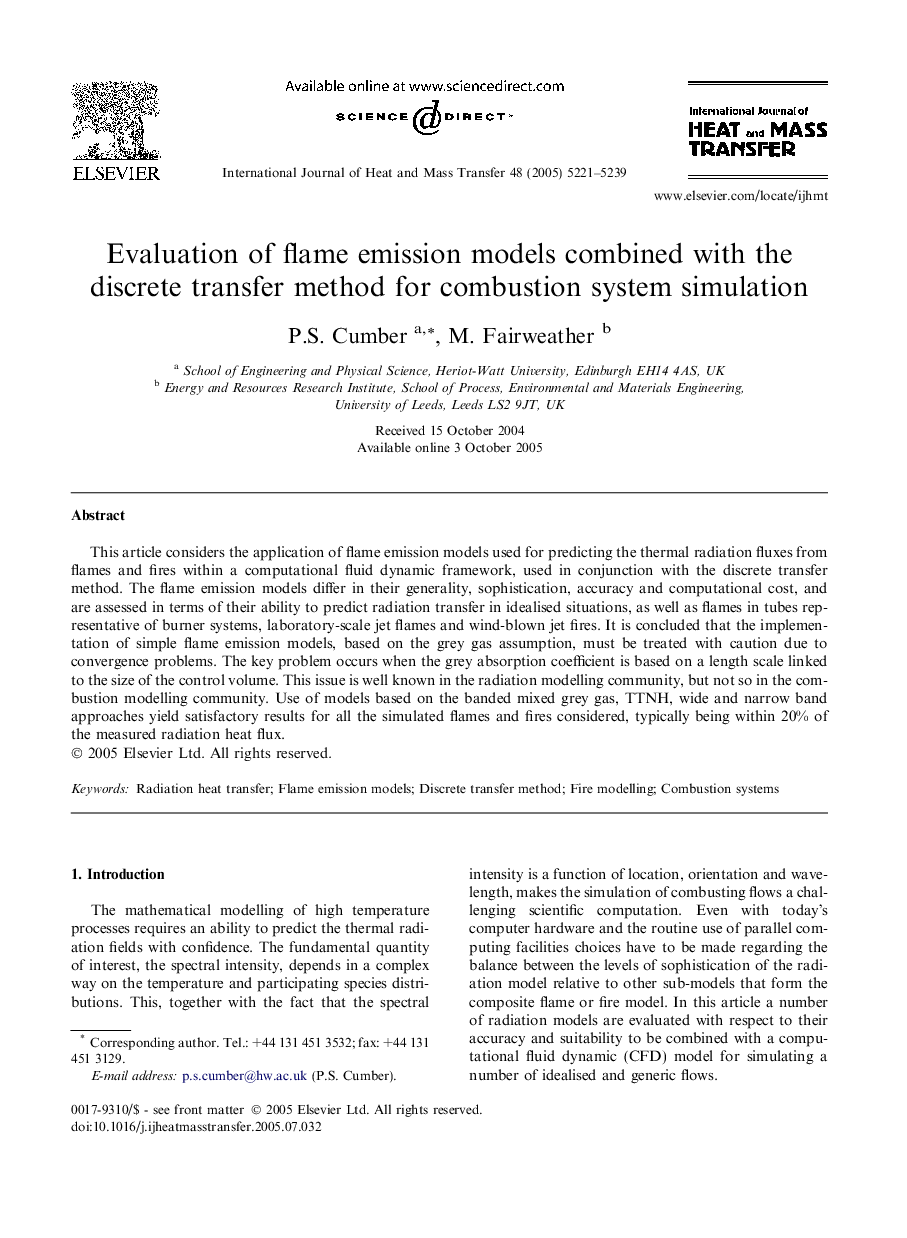| Article ID | Journal | Published Year | Pages | File Type |
|---|---|---|---|---|
| 662585 | International Journal of Heat and Mass Transfer | 2005 | 19 Pages |
This article considers the application of flame emission models used for predicting the thermal radiation fluxes from flames and fires within a computational fluid dynamic framework, used in conjunction with the discrete transfer method. The flame emission models differ in their generality, sophistication, accuracy and computational cost, and are assessed in terms of their ability to predict radiation transfer in idealised situations, as well as flames in tubes representative of burner systems, laboratory-scale jet flames and wind-blown jet fires. It is concluded that the implementation of simple flame emission models, based on the grey gas assumption, must be treated with caution due to convergence problems. The key problem occurs when the grey absorption coefficient is based on a length scale linked to the size of the control volume. This issue is well known in the radiation modelling community, but not so in the combustion modelling community. Use of models based on the banded mixed grey gas, TTNH, wide and narrow band approaches yield satisfactory results for all the simulated flames and fires considered, typically being within 20% of the measured radiation heat flux.
